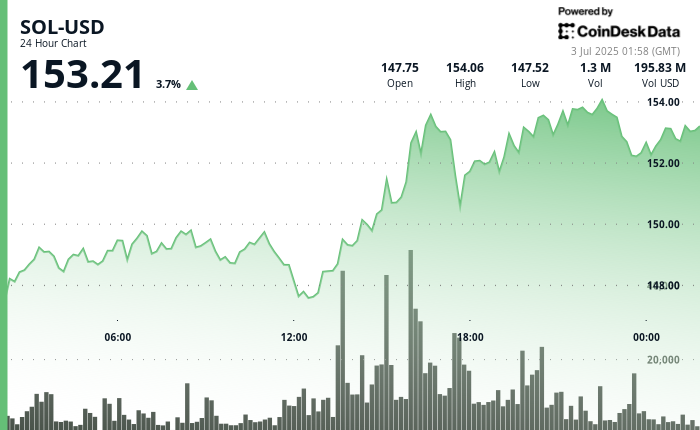
Now
that
spot
bitcoin
exchange-traded
funds
(ETFs)
are
live
in
the
U.S.,
market
watchers
are
looking
for
the
next
potentially
bullish
event
to
drive
cryptocurrency
gains.
Following
the
U.S.
Security
and
Exchange
Commission’s
(SEC)
long-awaited
decision
to
approve
these
financial
products,
bitcoin
ETFs
have
simultaneously
overperformed
and
underwhelmed
expectations
–
representing
the
pluses
and
minuses
of
a
market
driven
by
hype.
This
is
an
excerpt
from
The
Node
newsletter,
a
daily
roundup
of
the
most
pivotal
crypto
news
on
CoinDesk
and
beyond.
You
can
subscribe
to
get
the
full
newsletter
here.
The
top
three
bitcoin
ETFs
have
seen
well
over
half
a
billion
dollars
worth
of
capital
inflows
(not
counting
Grayscale’s
$22
billion
fund,
which
was
converted
over
from
the
existing
GBTC
trust
and
has
seen
sizable
outflows),
signifying
the
significant
customer
demand
for
traditional
on-ramps
into
bitcoin
(BTC).
In
the
weeks
leading
up
to
the
date
of
approval,
Wednesday,
Jan.
10,
bitcoin
rallied
to
a
recent
high
of
~$48,000.
Many
analysts
and
traders
are
now
hoping
the
upcoming
bitcoin
halving
—
when
the
rate
of
new
bitcoins
issued
to
network
validators
(aka
miners)
is
slashed
—
could
be
a
similar
catalyst
for
crypto
prices.
There
is
a
longstanding
debate
whether
these
programmatically
triggered
events
that
occur
once
every
four
years
are
“priced
in.”
The
approval
of
bitcoin
ETF’s
last
week
may
give
some
indication
of
what’s
to
come
for
the
next
bitcoin
hype
cycle.
The
listing
of
11
new
bitcoin
funds
was
a
clear
moment
to
sell,
at
least
in
hindsight,
and
bitcoin
has
since
sagged
~12%
to
$42,250
today.
It
remains
too
early
to
say
whether
bitcoin
ETFs
will
draw
in
billions
of
new
dollars
and
investors,
a
prediction
that
hangs
on
actual
demand
for
bitcoin.
Meanwhile,
the
bitcoin
halving
(sometimes
halvening)
narrative
is
a
supply-side
story:
bitcoin’s
price
could
pop
after
the
supply
of
new
coins
entering
the
market
becomes
constrained,
assuming
use
of
the
Bitcoin
network
remains
steady
or
increases.
To
some
extent,
the
bitcoin
halving
narrative
is
a
post-hoc
rationalization
for
the
fact
that
bitcoin
has
in
fact
gone
on
a
tear
in
the
months
after
every
halving
so
far.
For
instance,
six
months
after
the
network’s
second
halving
in
2016
(when
the
emissions
of
new
coins
per
block
fell
from
25
to
12.5
BTC),
bitcoin
crossed
the
$1,000
threshold
for
the
first
time.
A
similar
rally
happened
in
2020,
when
bitcoin
set
a
new
all-time
high.
But
there’s
little
to
suggest
that
these
price
increases
are
directly
related
to
the
halving,
outside
of
the
increased
bullish
sentiment
and
media
coverage
that
typically
precedes
the
event.
CoinShares,
in
its
latest
“Mining
Report”
noted
that
there’s
a
“peak
in
hashrate
growth
often
occurs
about
four
months
before
the
halving,
likely
due
to
a
‘Bitcoin
rush,’”
which
could
represent
positive
sentiment.
Except
the
economic
logic
around
a
bitcoin
supply
shock
is
a
bit
shaky,
considering
that
the
supply
of
new
bitcoins
will
actually
continue
to
increase
for
the
next
century
or
so,
at
which
point
all
21
million
bitcoins
will
have
been
mined.
Satoshi
Nakamoto
designed
the
Bitcoin
network
to
subsidize
miners
through
these
rewards
to
stimulate
adoption,
hoping
that
over
time
transaction
fees
will
grow
large
enough
to
sustain
network
security
and
validation.
CoinShares
doesn’t
offer
a
price
prediction
in
its
report,
which
instead
makes
the
case
that
bitcoin
mining
will
grow
more
competitive
after
the
halving,
knocking
out
the
least
efficient
miners.
While
Bitcoin
has
become
90%
more
efficient
since
the
last
halving,
hashrate
(which
represents
the
amount
of
computing
power
put
towards
network
security)
and
cost
structures
have
also
increased.
In
fact,
the
current
bitcoin
mining
difficulty
is
at
historic
highs,
with
computing
power
jumping
over
100%
in
2023.
CoinShares
predicts
this
to
fall
off
after
the
halving
with
a
“miner
exodus.”
The
company
also
said
the
“average
cost
of
production
per
coin”
could
normalize
at
just
under
$38,000
post-halving,
given
the
complicated
interrelation
between
hardware
and
electricity
costs,
difficulty
levels
and
the
cost
structures
that
determine
whether
certain
miners
are
making
or
losing
money,
which
determines
how
many
miners
are
on
the
network.
What
exactly
does
this
mean
for
bitcoin
price
predictions?
Well
somewhat
contradictorily,
if
bitcoin
prices
remain
above
$40,000
it
may
actually
drive
miner
returns
lower.
CoinShares
doesn’t
offer
this
prediction
as
such,
but
given
that
miners
are
often
the
largest
sellers
of
bitcoin,
reduced
profitability
may
also
create
selling
pressure
from
that
group.
There
are
plenty
of
others
who
disagree,
and
see
the
halving
as
another
potential
positive
catalyst
for
bitcoin
prices.
But
it’s
important
to
note
that
everyone
has
their
own
incentives.
The
only
near-guarantee
when
it
comes
to
the
halving
is
that
it’s
another
moment
for
hype.
